As far as tech trends go, smaller is almost always better. The team behind the University of Malta’s first ever PocketQube satellite agree-—–except when it comes to their ambitions. Cassi Camilleri speaks to Dr Ing. Marc Azzopardi, Darren Cachia, and Jonathan Camilleri to determine how work is progressing ahead of their 2018 space launch.
Listen to this article as a podcast
Space has the ability to capture imaginations like nothing else. Some of the latest blockbuster films like Interstellar, Gravity, and The Martian are a testament to that fact.
Science has produced a steady stream of knowledge, providing solid answers on how the world around us works, but the remaining list is not becoming easier to unravel. As a result, technology has made tremendous leaps to meet these demands, and we now live in a world where ‘cutting edge’ technology surrounds us on a daily basis. Go to any university, science fair, or tech convention and you can barely swing a cat without hitting twenty ‘cutting edge’ projects. The term that once had everyone buzzing has lost its impact. When it comes to the PocketQube satellite called UoMBSat1 and its miniscule size of 5cm on each side, however, its position on the scale of innovation is cemented firmly at the bleeding edge.
Humble beginnings: Innovation opportunity
The beginnings of this research project lie somewhere around 2014. The University of Malta (UoM) researchers have been held back by the sheer expense of launching rockets and building satellites. Turning this issue on its head, Dr Ing. Marc Azzopardi and Dr Ing. Andrew Sammut set up the Astrionics Research Group (Astrea, Faculty of Engineering, UoM). Their aim? To find affordable solutions to the plethora of issues that arise when electronic components are sent into space. At face value, their answer appears to be twofold: standardisation and miniaturisation. The secret sauce, however, involves combining off-the-shelf components in new and clever ways without sacrificing too much in terms of reliability.
The costs of launching objects into space, aside from research, development, and the considerable fixed costs that come before, are above €10,000 per kilogram. Up there, a thimbleful of lead would cost as much as a bar of gold. Therefore, the tech trend holds true here too: the smaller, the better. This is where the PocketQube pico-satellite’s size is key. Weighing in at a mere 250g and measuring 5cm on each side, this miniature satellite could be the answer to all our prayers and to all space-oriented engineers’ and scientists’ cash-flow troubles.
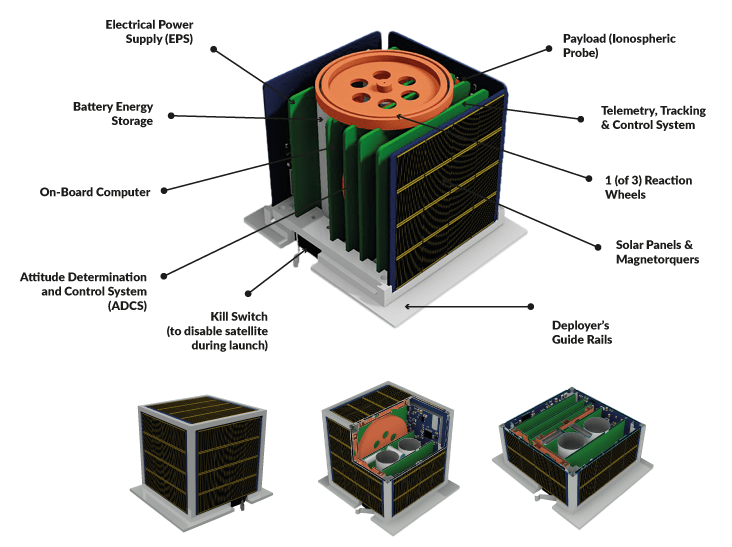
Proposed by Professor Robert Twiggs at Stanford University, cubic satellites of various standard sizes have gained incredible popularity over the years, but only four PocketQubes have made it to space thus far. Ready-made kits of CubeSat nano-satellites (10cms on each side) are available to anyone over the internet through online shops that are sprouting up all over Europe. A startup in Glasgow plans to do the same with PocketQubes. However, a fairly deep pocket remains a prerequisite, with each kit clocking in at about €10,000, a figure that stands alone and includes none of the launch costs. Following a call issued by the new research group in 2014, Darren Cachia joined the team and is now laying the groundwork to build the UoM’s first PocketQube satellite from scratch with off-the-shelf components as part of his Masters of Science in Engineering. In the same way smartphones can be made at a fraction of the price that they used to, why can’t satellites go down the same route?
This project could lead to the UoM and the country having a space programme of sorts. It is also paving the way for the future.
This line of questioning was exactly the kind of discussion Cachia and his longtime friend Jonathan Camilleri found themselves getting excited about. At the time, Camilleri had just been accepted at the University of Birmingham to read for a doctorate, a project focused on the use of small satellites to study certain properties of the Earth’s ionosphere, an ionised region of the upper atmosphere. Camilleri wanted to look into the variations in the ionosphere, improve models, and effectively predict what effect they could have on the operation of communications systems such as GPS. This kind of information would then be used to develop methods that would mitigate damaging effects on these systems. These overlapping interests led to Cachia and Camilleri proposing their space mission at the fifth Interplanetary CubeSat Workshop in Oxford.
After the workshop, talks ensued between the UoM and SERENE (Space Environment and Radio Engineering) Research Group at Birmingham (run by Camilleri’s supervisor Prof. Matthew Angling). An agreement between the universities was reached, linking the projects to launch a PocketQube. ‘The idea is to build a financially-viable satellite and launch eight such devices into space to create a constellation,’ says Camilleri. These would spread over a large geographical area and hence gain better coverage of the ionospheric parameters. This way, they would be able to harvest ‘numerous measurements at any one time, bolstering accuracy significantly’. Should it be successful, the satellites will relay information back to Earth for many months, perhaps years, that would be useful to scientists involved in the study of the ionosphere. After that the devices will gradually run out of steam, the batteries will deteriorate, and the ‘Qubes’ will orbit the Earth lifeless for another 20 years; that’s before burning up in the upper atmosphere, very much like shooting stars. 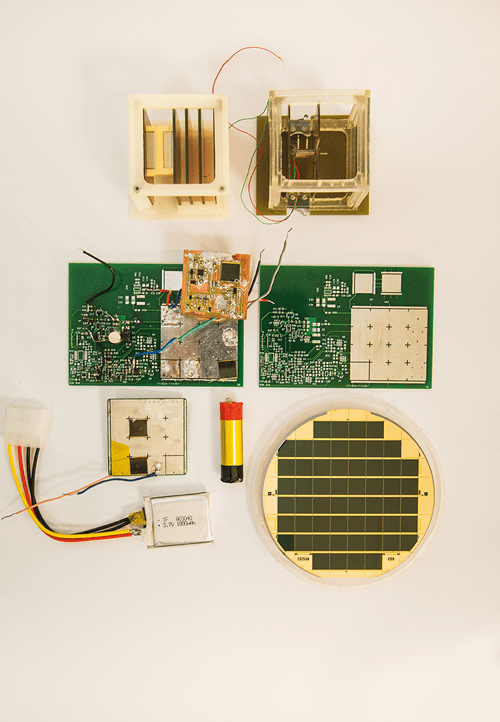
But that will not be the end of it. ‘The idea was, and is, to modularise and standardise space systems as much as possible so future users won’t have to go through the process of development and create everything from scratch every time,’ says Cachia. ‘In future the focus should be on achieving the data we need to do the science,’ iterates Camilleri. ‘With this project, we’re hitting two birds with one stone.’ In the meantime the team is gaining useful insight and design experience for future projects. ‘We are also building human expertise, so that a new generation of young students would have the support and be inspired to take Malta into space regularly,’ comments Azzopardi.
Trials and tribulations
While a tiny satellite that can fit in your pocket sounds adorable, the process of making it better can be tortuous. The small size obviously creates issues. The question of whether or not the power supply and batteries would fit comes up often. The researchers also need to determine the reliability of the device. Will they be able to install failsafes in the satellite to prevent catastrophic malfunction or inaccurate data which, if transmitted, could offset results? Beyond the issue of volume, they have to think about the massive temperature swings, corrosive oxygen radicals, high radiation levels, and extremely low pressure that the device, its components, and their materials need to withstand.
Cachia has mostly been testing various commercial off-the-shelf materials and components to determine what can and cannot be used in UoMBSat1. ‘Since June 2016 I’ve been putting stuff together, checking if the circuits work, and modifying designs where required,’ notes Cachia. Azzopardi nods in agreement, ‘It’s really an arduous but necessary process of trial and error, driven by increasingly educated guesses.’
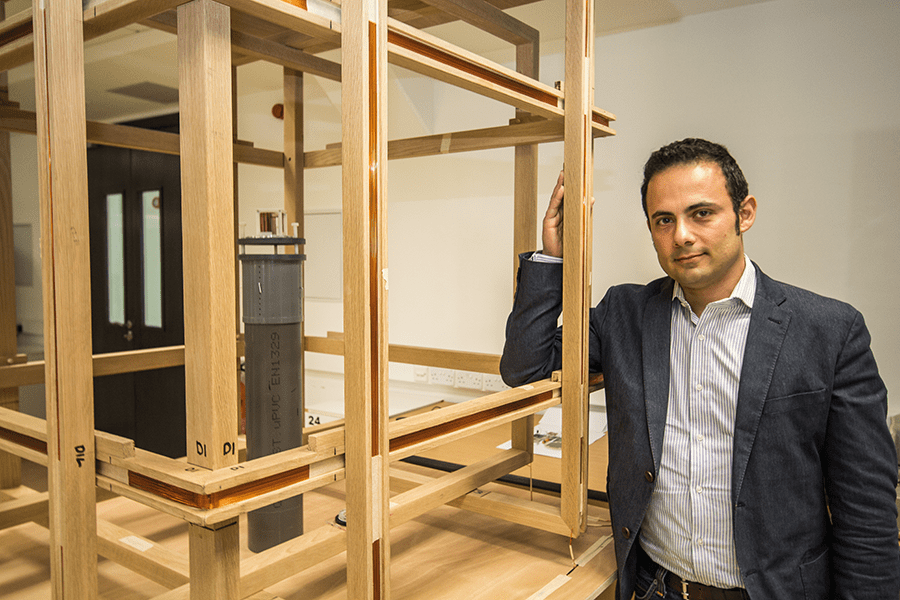
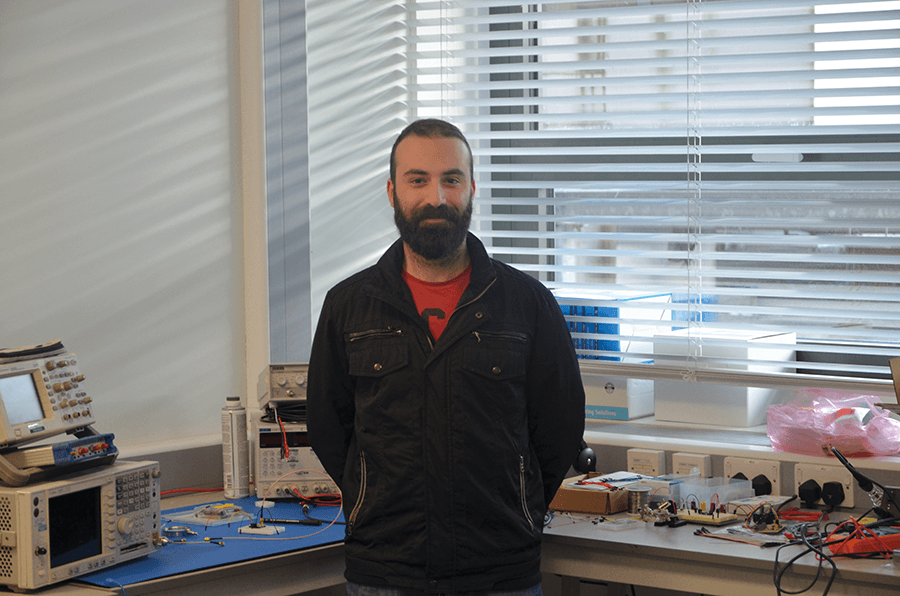
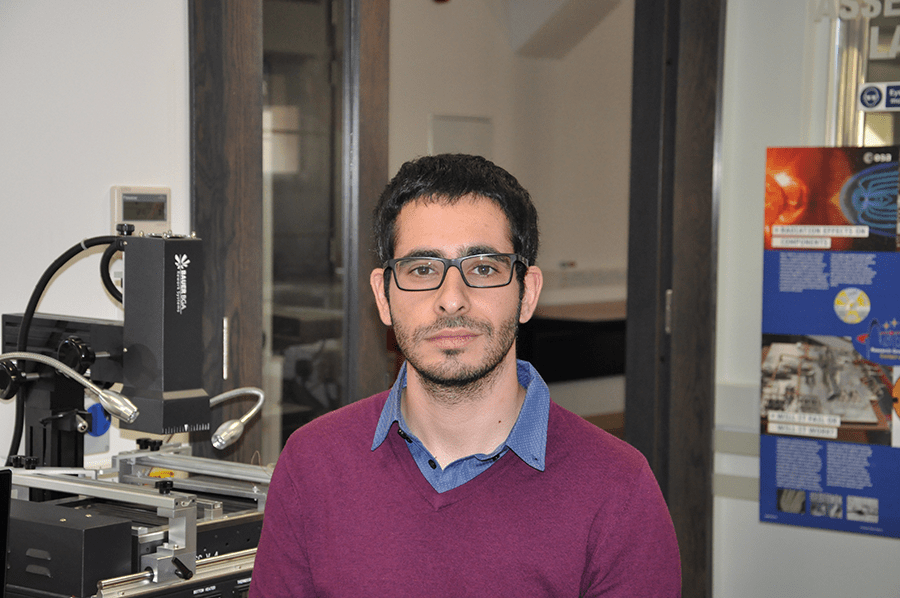
Camilleri is concurrently working on the sensor needed to obtain the ionosphere readings, which is presenting several challenges. ‘I had to design an experiment inside a vacuum chamber to test it […] and I had no idea where to start from. At first I had no clue how to generate free electrons in a vacuum to simulate an ionospheric plasma. It was a low period for me. I thought I needed years to develop something decent. It was tough.’ But despite the difficulty, Camilleri pulled it together and pushed through. How? ‘Papers. Lots of papers. It’s all about reading, more educated guesses verified by analysis, modelling, and experiment. Step by step, I created basic shapes and worked towards more complex field geometries from there.’
Other teams of students are also working on important areas of the project. ‘We needed a communication system, a power system, some on-board data handling, and an attitude control system (ACS) that would orient the satellite correctly.’ The ACS team is made of three other students: Denise Baldacchino, Ramses Rotin, and Darren Debattista, and their supervisors Prof. Ing. Simon Fabri and Dr Ing. Marvin Bugeja. The communication element has seen the Faculty of ICT being roped in and building its own team. This is truly an inspiring interdisciplinary ‘all hands on deck’ type situation. ‘Pooling time and expertise is the only realistic way to get anything significant done, and sharing the achievement will be an important achievement in its own right,’ says Azzopardi, who is keen on giving credit where it is due.
This work has culminated in a successful feasibility study. The current design fits within the requirements of the PocketQube. However, the power budget is tight. ‘Five out of six sides of the satellite are covered with exotic high-efficiency solar panels, but there isn’t much area to begin with, so it took some careful design and calculation before we were confident enough that we would be able to operate all the systems and leave enough margin for contingencies,’ reveals Azzopardi. They presented these results at the Small Satellites Systems and Services (4S) Symposium in Valletta in June 2016. That was when ‘we got to know how the industry works. We met a lot of people—people with whom we had got in touch before and who offered to review our project,’ notes Azzopardi, a process which will move them one step closer to launch day.
To infinity, and beyond!
‘Now, we finish building the prototype,’ asserts Cachia. A preliminary design review is coming up between May and June 2017. This would require the prototype to be assembled and functional, even if not perfect. ‘It is a constraint we have. We need to work within academic schedules to keep participation open to as many students as possible,’ Azzopardi points out. But work will continue long after this first milestone, and the team has their sights set well into the future. ‘There is a whole market for this. Once we develop all the subsystems for this project, we could have the opportunity to launch startups to help others save on development time,’ says Azzopardi.
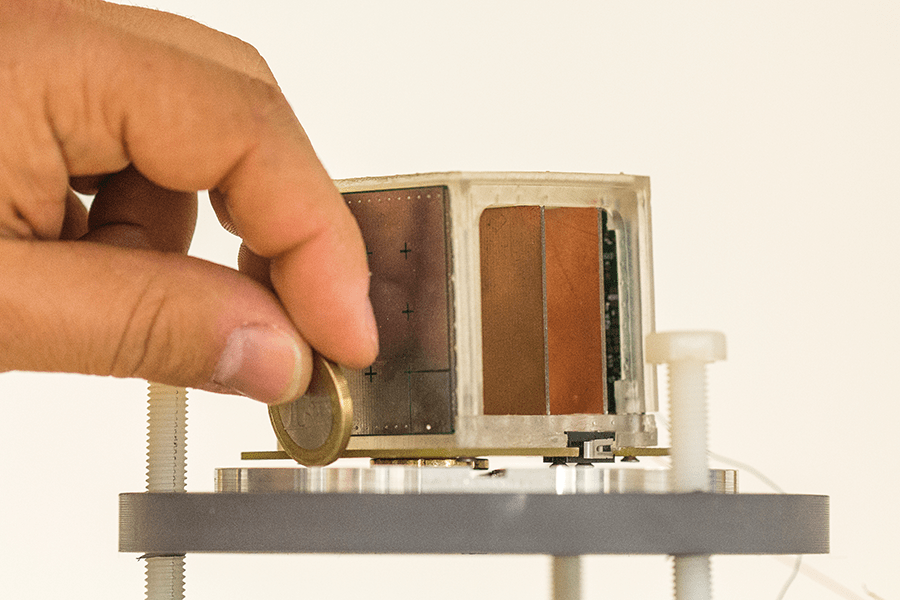
Apart from the potential money-making side of things, this project will hopefully lead to many others for Malta to join ESA. ‘I know that the Malta Council of Science and Technology are encouraging more cooperation with the ESA, and concrete projects for further capacity building are being explored,’ comments Azzopardi.’
‘It may be a very small satellite that we’re working on, but the effort going into it is immense,’ notes Azzopardi. And rightly so. This project could lead to the UoM and the country having a space programme of sorts. It is also paving the way for the future. A future that may yield solutions to earthly, and perhaps national problems, and a future that may grow into a local industry that can support the careers of many budding engineers and scientists with a passion for adventure.
This research work is being partly funded by the ENDEAVOUR Scholarship Scheme, which is part financed by the European Union—European Structural and Investment Funds Operational Programme II – Cohesion Policy 2014–2020. This work is possible thanks to the support of the Malta Amateur Radio League, and the Italian Astrodynamics company, GAUSS Srl in Rome, who will be providing the launch service.




Comments are closed for this article!